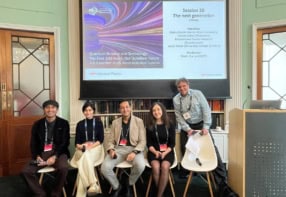
Researchers in the US who receive tenure produce more novel but less impactful work, according to an analysis of the output of more than 12,000 academics across 15 disciplines. The study also finds that publication rates rise steeply and steadily during tenure-track, typically peaking the year before a scientist receives a permanent position. After tenure, their average publication rate settles near the peak value.
Carried out by data scientists led by Giorgio Tripodi from Northwestern University in Illinois, the study examined the publication history of academics five years before tenure and five years after. The researchers say that the observed pattern – a rise before tenure, followed by a peak and then a steady level – is highly reproducible.
“Tenure in the US academic system is a very peculiar contract,” explains Tripodi. “It [features] a relatively long probation period followed by a permanent appointment [which is] a strong incentive to maximize research output and avoid projects that are more likely to fail during the tenure track.”
The study reveals that academics in non-lab-based disciplines, such as mathematics, business, economics, sociology and political science, exhibit a fall in research output after tenure. But for those in the other 10 disciplines, including physics, publication rates are sustained around the pre-tenure peak.
“In lab-based fields, collaborative teams and sustained funding streams may help maintain high productivity post-tenure,” says Tripodi. “In contrast, in more individual-centred disciplines like mathematics or sociology, where research output is less dependent on continuous lab operation, the post-tenure slowdown appears to be more pronounced.” Thinking of switching research fields? Beware the citation ‘pivot penalty’ revealed by new study
The team also looked at the proportion of high-impact papers – defined as those in the top 5% of a field – and found that researchers in all 15 disciplines publish more high-impact papers before tenure than after. As for “novelty” – defined as atypical combinations of work – this increases with time, but the most novel papers tend to appear after tenure.
According to Tripodi, once tenure and job security has been secured, the pressure to publish shifts towards other objectives – a move that explains the plateau or decline seen in the publication data. “Our results show that tenure allows scientists to take more risks, explore novel research directions, and reorganize their research portfolio,” he adds.



